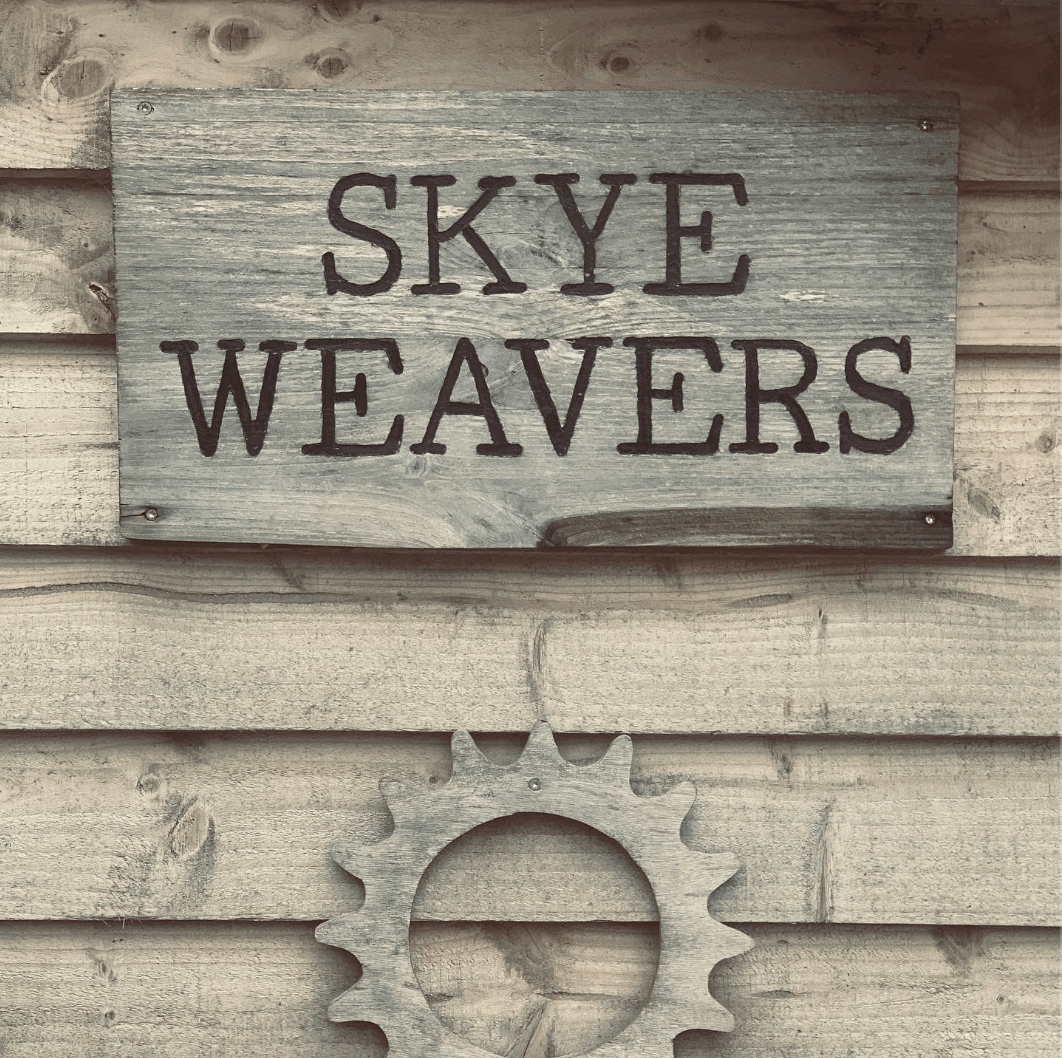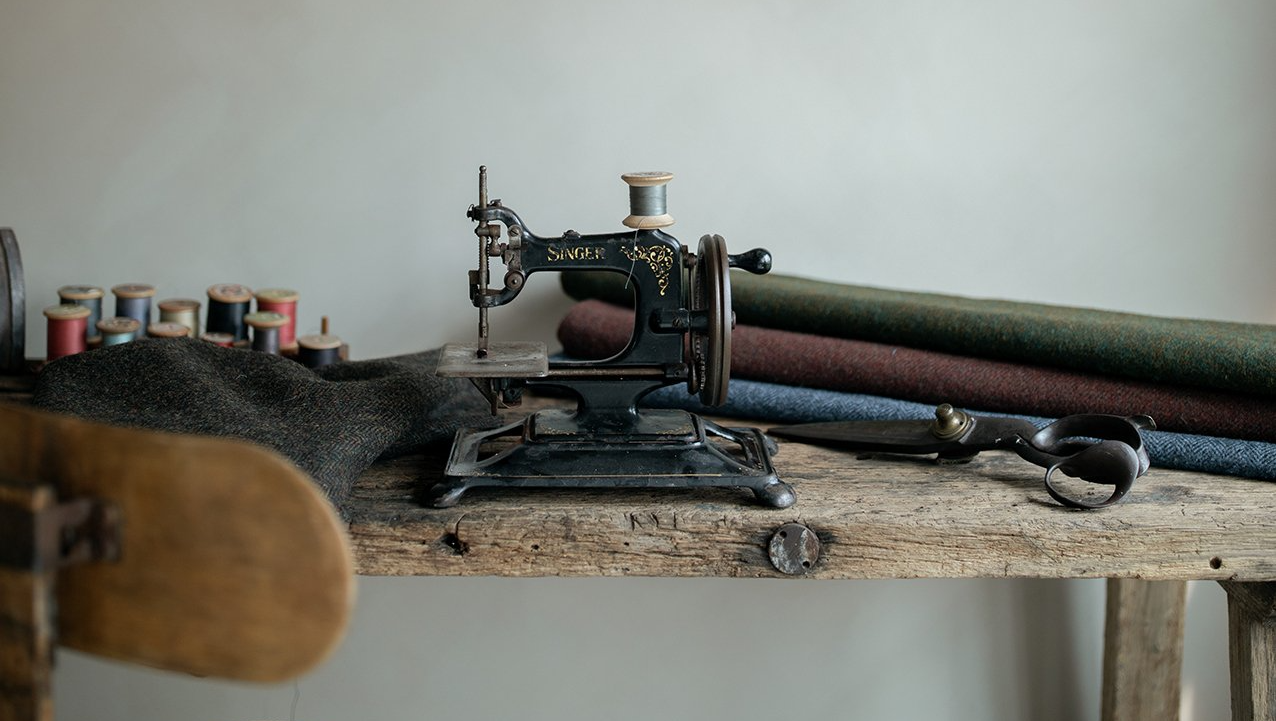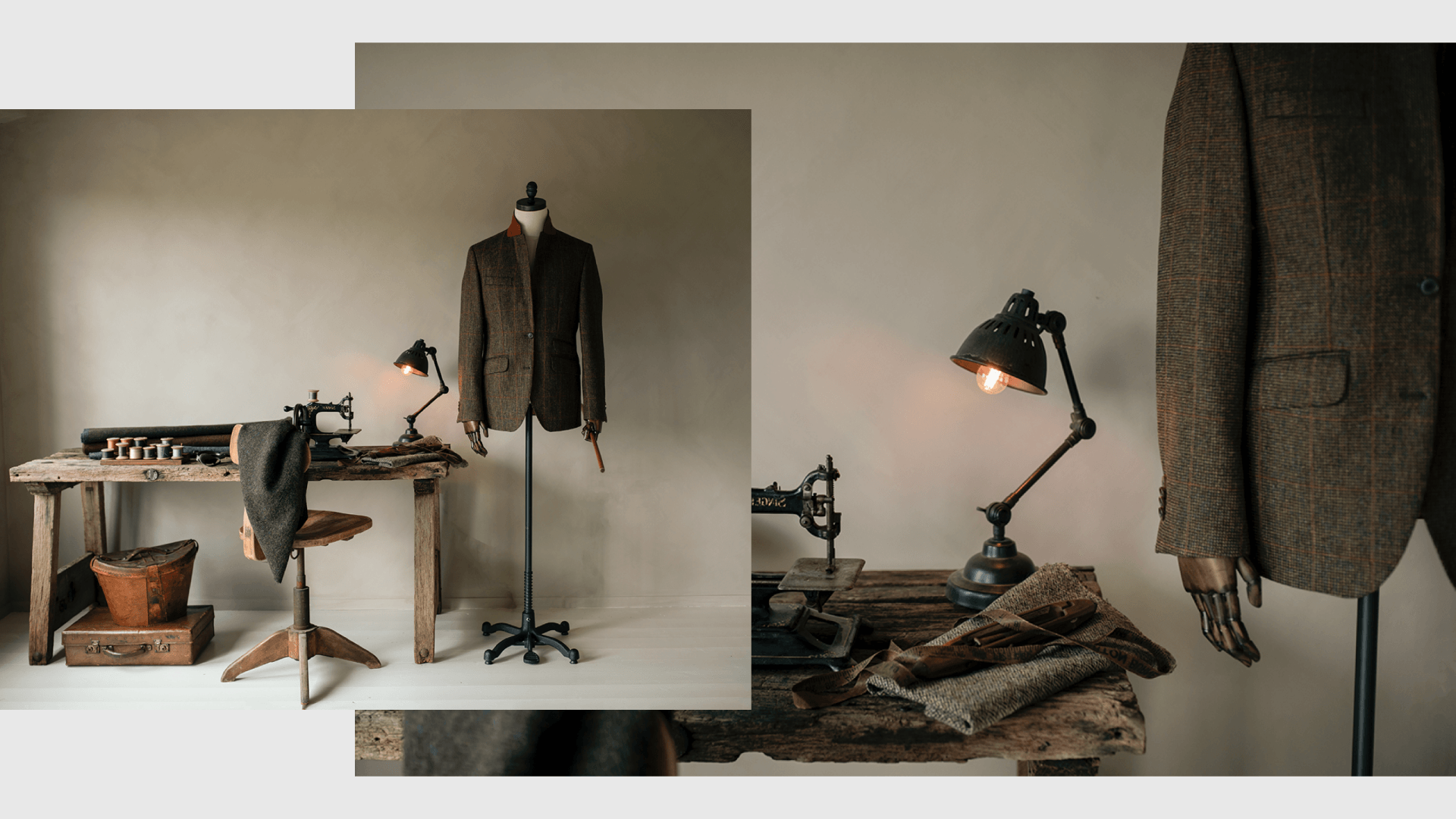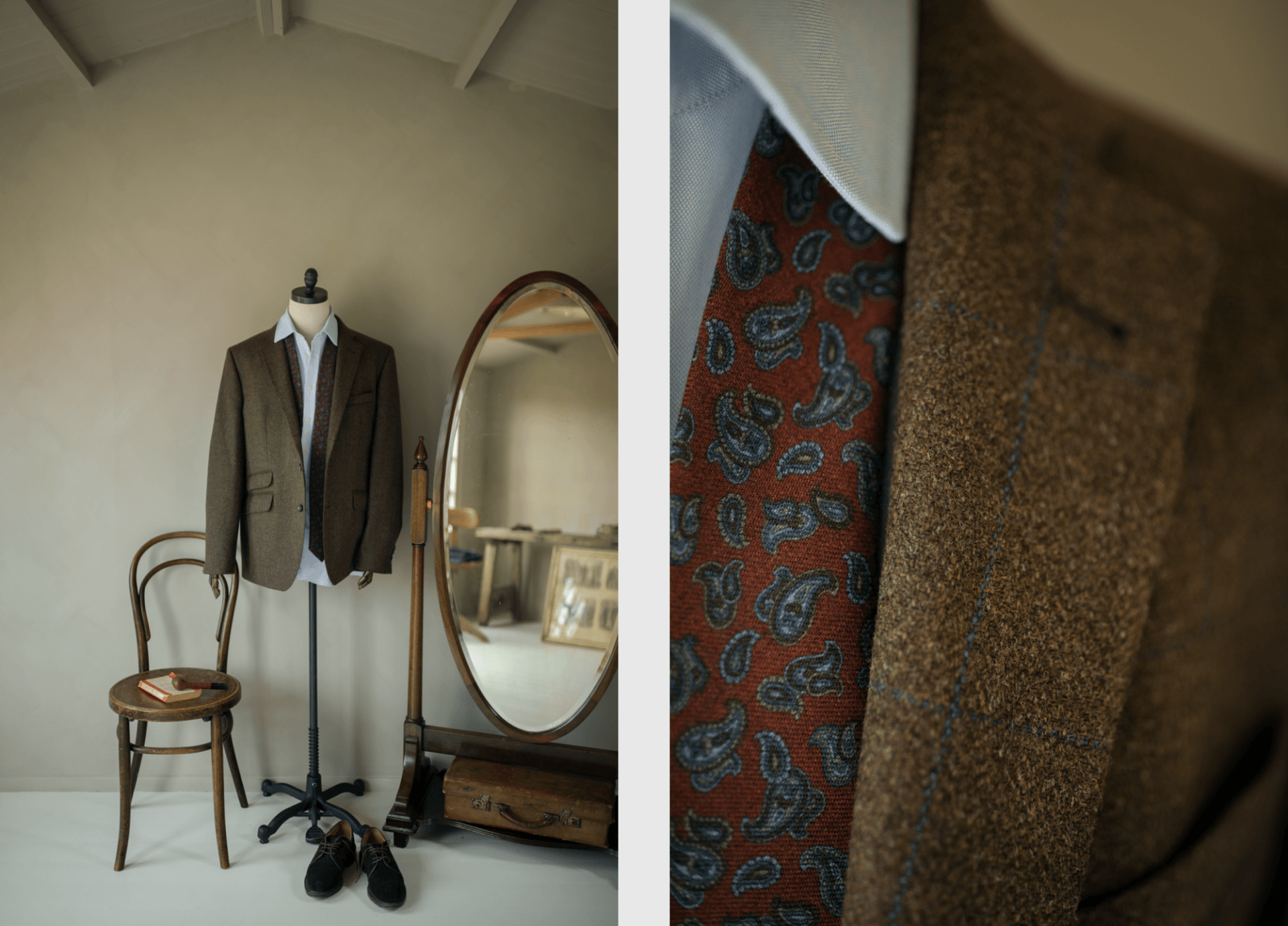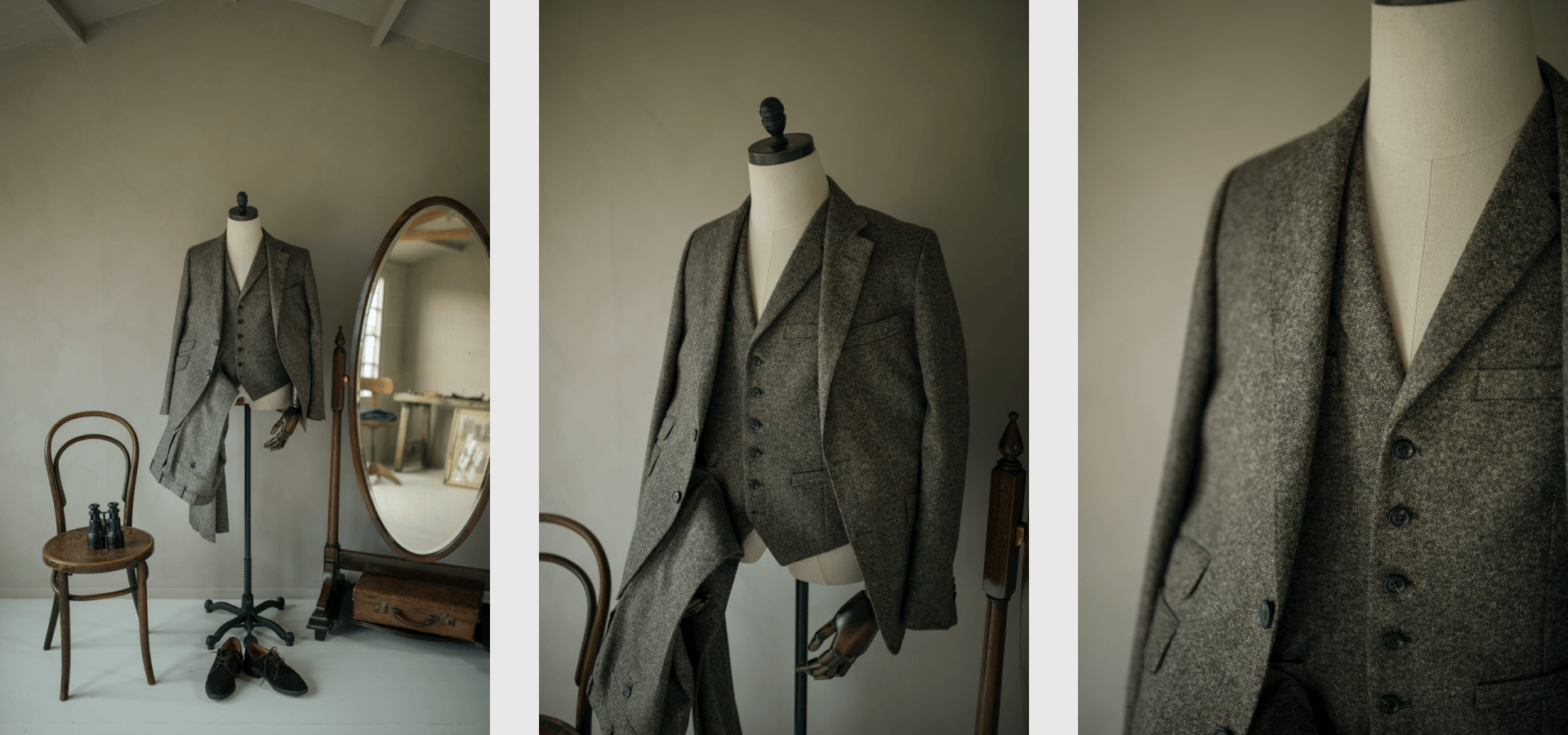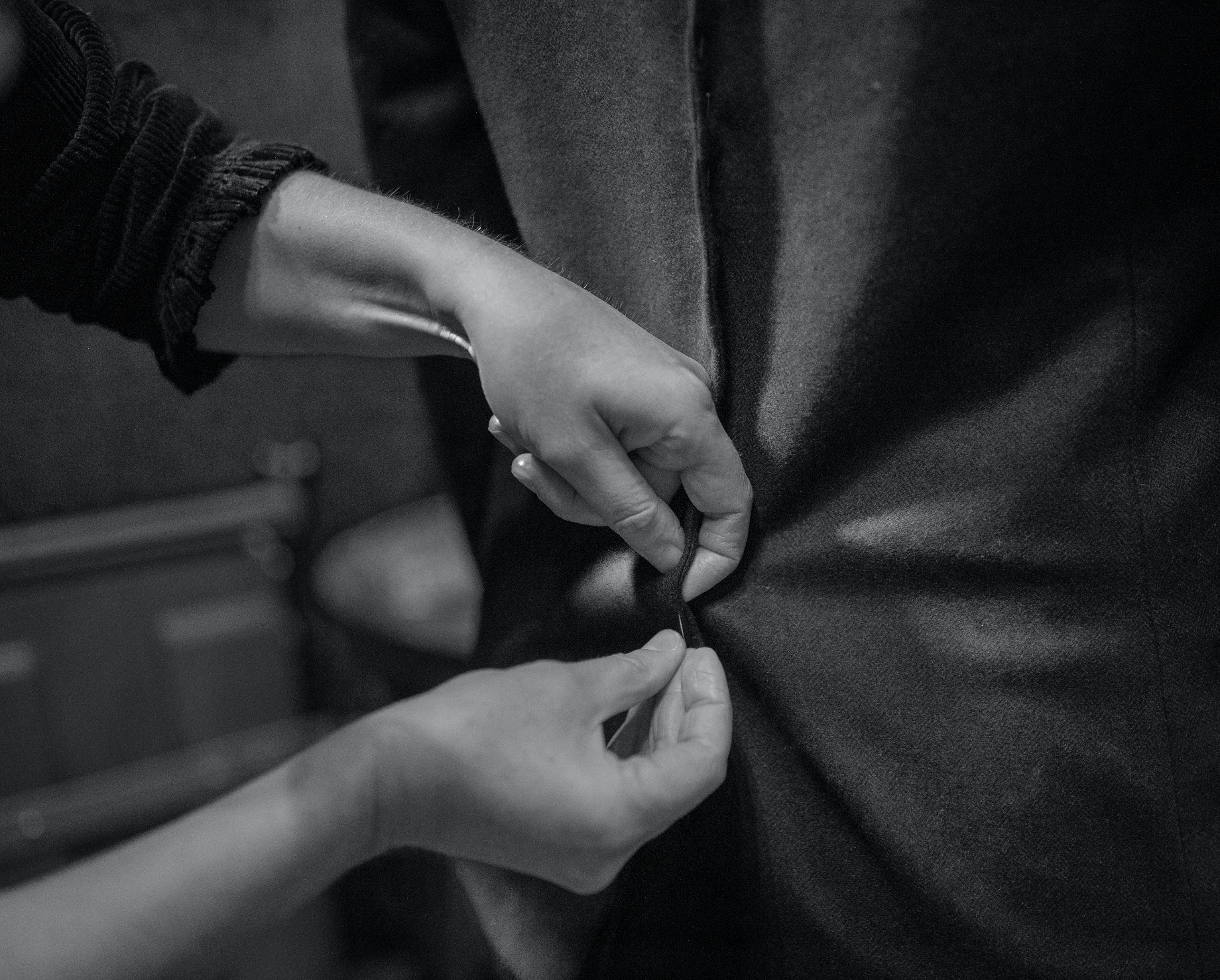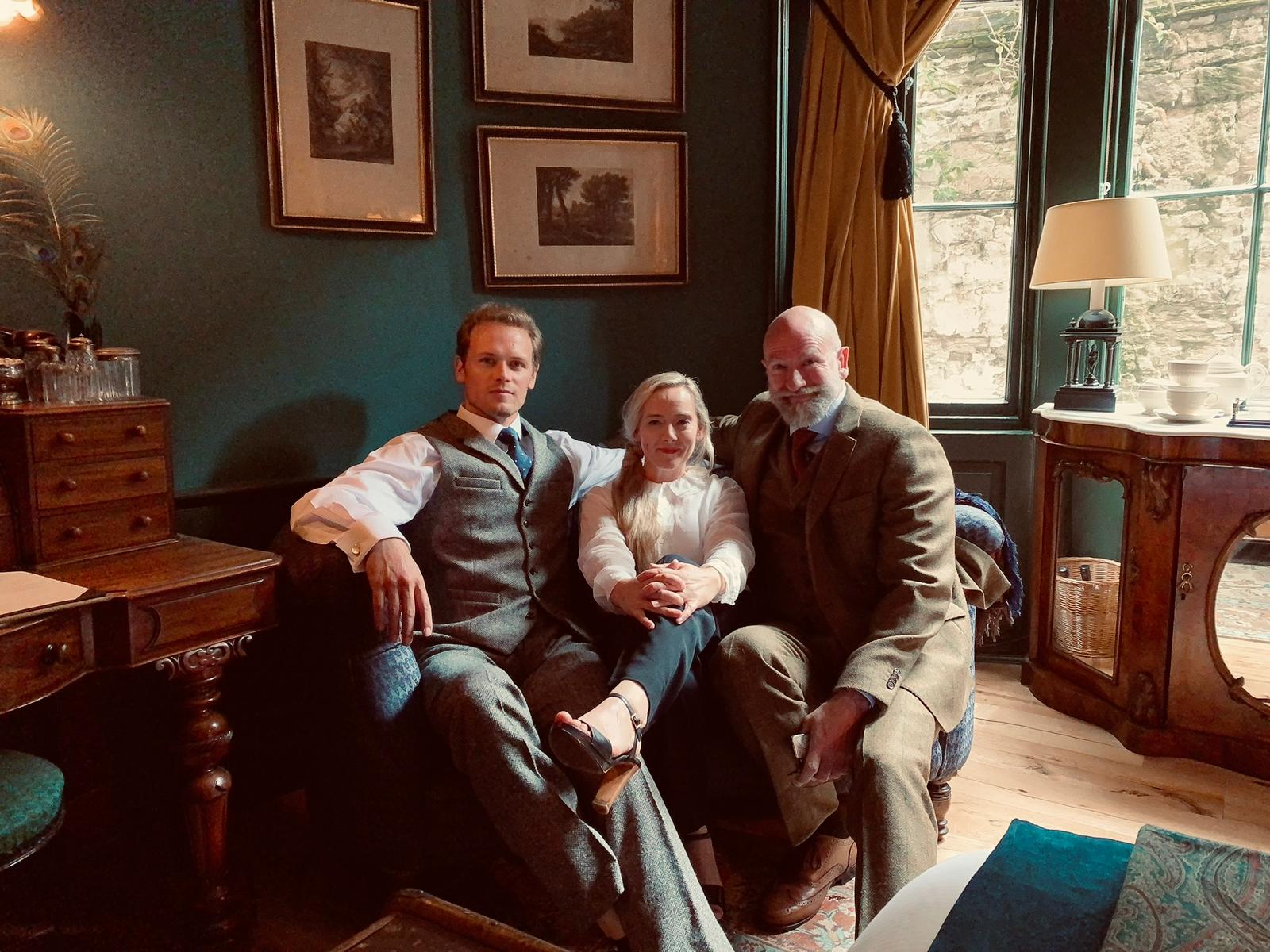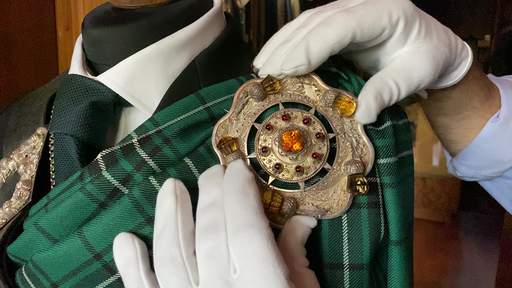Hawick, The Home of Tweed
— Chapter 6: Mill
from The Art of Tweed
by Vixy Rae
It is hard to believe that in a time when tweed has become so popular globally, some British mills have been struggling to survive and a few have even closed. It is never a simple story, some were inefficient and eventually orders start to dwindle. Some were simply the end of a generation where the owner was at retirement age and there was no one to take over the mill and drive it forward. But out of these dark times, there does shine a special few, who have thrived and expanded, meeting a growing demand with new ideas, techniques and passion.
Lovat Mill is one of those mills, they have forged a solid reputation, and has become an iconic brand in their own right. Located in the border town of Hawick, they are the only remaining producers of cloth in the once thriving weaving town. The whole body and spirit of the town’s forebearers is written into their core values, and they have become custodians of a proud heritage which they intend to maintain and nurture for future generations.
Located on the banks of the river Teviot (all sounds very romantic), a once important source of power, now redundant as new technologies ensure the flow of production is more constant than the ebb of the river. The eighteenth century relied wholly on waterpower to turn the looms, but fortunately somethings change for the better. Some aspects of the early industry have survived, mainly the clever ingenuity and the craftsmanship that has been passed down through the generations.
Hawick was one of those towns that already had a rich heritage of: spinning, weaving and knitting, even before the industrial revolution started. The Famed Hodden Grey cloth whose legacy graces the verse of Robert Burn’s poem “A Man’s a Man” as well as being the first Camouflage cloth used by the army for kilts. The cottage industries of the town were engulfed in the surge of demand and the construction of purpose built mills heralded a dramatic change to the shape and landscape. Commercial Road is now the unofficial ‘Home of Tweed’, and remnants of the towns past can be seen still dotted along it’s banks, re-purposed and rebuilt. The bygone bustle of London’s merchants scouring the town for the finest unique patterns are now just ghosts of the imagination.
This last bastion of tweed creation in Hawick is run under the watchful eyes of Stephen Rendle and Alan Cumming. The pair have a rich and expansive knowledge of the intricacies of cloth design and production. Having worked in weaving for companies including Reid and Taylor, renowned back in the day for complex twist weaves in fine worsted. They understand the importance of nurturing skills and craft. They see themselves as custodians, upholding a rich heritage, encouraging it to meet the modern demands. Stephen explains, “Alan and I were privileged to have learned the craft from some great practitioners and we aim to equip and train the next generation of tweed makers. If we don’t then all these skills would be lost and they are central to everything we do. Our customers come to us because of our heritage.”
This resonates strongly with me, as my feelings are much the same for tailoring. Having purchased Stewart Christie & Co the realisation that looking back is as important as looking to the future. Companies did not survive by remaining the same, they needed to constantly change and evolve. The poem ‘Chuckies on the Cairn” by Robert Garioch holds a strong sentiment for Alan and Stephen. In the verse Garioch recounts climbing a mountain, at the top he pauses to place two or three new pebbles on the pile which marks the summit. His acknowledgment of the fact the cairn has been built by men mightier than him, who have carried weightier stones than he. “I love that analogy because really, we’re standing on the shoulders of giants who came before us.” Stephen tells me, I completely agree that we are custodians of the age.
I have always loved visiting mills, and seeing the amazing selection of fabrics, a tour around the mill always has held a sense of wonder. I am always impressed with the scale of the machinery and how someone had devised these machines to enable labour intensive jobs to be mechanised. In comparison to some mills, Lovat has invested in cutting edge equipment and although the production floor is slightly clinical Stephen’s words ring in my ears, “An efficient mill is a profitable mill.” Both Stephen and Alan recognise the need for consistency and reliability, but they have not sacrificed the romance. And Alan has a tasteful eye for colour, so they are wonderful to work with.
The mill has changed even since I started visiting. A storage area on the ground floor has been transformed into a shop come visitor centre. They profess they are not retailers, but it is an impressive space none the less. The cloth showroom on the first floor is like ascending to tweed heaven. Wall to wall ‘bolts’ of tweed with the occasional worsted; stock lines along side, some new innovations and ‘weave ups’. Weave ups are limited edition short lengths of cloth, they use up redundant and left over yarn, and it is a chance for the designers imagination to go wild and trial out colour combinations. “They are complex creations incorporating anything from five to 40 individual fibre and yarn colours.” Explains Stephen. I am always interested to see their weave ups which hold the promise of something unusual and unique, but the thing which excites me most is there archive.
Whilst clearing out one of their storerooms, Stephen and Alan unearthed a set of designer’s notebooks dating back to the 1880’s. The black oil cloth covers concealed hundreds of designs complete with detailed instructions. It is a bit like finding the some precious buried archeological relic. Carefully thumbing through the pages I am amazed at how modern some of the designs appear. The notations resemble sandskrit, but you can see the weaver who complied this notebook had a deep devotion to their craft. They recorded all the small tweaks to ensure perfection in the cloth and the small swatches to me are like looking back in time.
Tweed for Lovat is the ultimate craft, partially a work of art, and partially precision engineering, but in essence a Labour of love. Having created a Stewart Christie tartan to celebrate the companies 300th Anniversary, I thought it only right to balance this with creating a tweed to compliment the colours and ideas. “Tartan is linked to families, but tweed is tied to the land. The cloth’s designs, both old and new reflect that.” Stephen retorts, ‘tweeds do not have to be constrained by strict patterns in the way that checks in tartans are, combining colours is part of the designer’s art. The creators of new patterns have to play by all of the design rules as well. Nothing ever comes out of nowhere.”
I am a bit apprehensive after Stephen’s words, as my design process evolves around my mantra of “No Rules!”. I produce the yarn colours and the swatches of patterns which have inspired me and Alan’s keen eye is cast over my combinations for scrutiny. “For quality I would suggest our Phoenix quality, which is based on our 322 quality (one which I ordered recently) but with a more natural and ‘antique tweedy’ finish.” Alan suggests, “The origins are this quality go back over 100 years and so is a good historic candidate for documenting too.” I am confident he has a handle on the direction I am wanting to take. The next stage to find the options for the ground colours and then fine tune it as much as possible on their cad system, before attempting a ‘darn in’. No matter how much you can combine colours on a screen, there is no substitute for seeing how the yarn’s actual colour and texture behave together.
The ‘darn-in’ takes an existing pattern piece or swatch to match the colour I have chosen as a base, and then the accent colours to make up the pattern are darned through by hand. Although the mill has cutting edge equipment, some jobs can’t be done by machine. There is a quiet room, away from the production floor, where the freshly woven cloth is checked by very meticulous eyes. Before the cloth has been steamed and finished it goes to this room where each metre is painstakingly checked for snags, breaks and flaws. The skilled ladies in this room mend the cloth by hand, these same careful hands will also assemble the darn-ups for me.
It is rare to achieve perfection on a first attempt, but that’s more about my exacting vision rather than the darners skill. “Everything starts with the customer - if you ignore what they’re looking for in a product, then you haven’t a hope. People still recognise quality.” Stephen reassures me, “to give the customers what they want, you have to listen to them and what it is they are looking for in a cloth. Then it’s about understanding the raw materials - right down to how the twist of the yarn is going to affect the drape of the cloth.” It does echo the same sentiments of many top chefs and distillers, knowing how to combine all the elements is the skill, and creating something wonderful is the craft, wanting to innovate is the passion.
After a few more, versions I can see what I have been looking for, and when it is confirmed the pace and the noise of the process amplify. I am aware that to be able to see it woven is a complete luxury, as I look across at the order sheets seeing names I recognise, those who have a slightly bigger annual purchase of cloth than Stewart Christie. It makes me aware that Lovat Mill are now considerable players on the global tweed market. With the yarn to be twisted and warped to process continues. The slight twist of the yarn is the hidden task which can change the handle and appearance of the tweed. The warping is always a complex and meticulous part to set up ensuring the pattern is correct.
Although the process remains the same for each mill, it is important to recognise the differences such as the precision of modern equipment, giving a finish that past generations could only dream of achieving. The computerised looms are able to produce cloth accurately at a phenomenal pace. But it is apparent with such big customers and their seasonal manufacturing deadlines that it is massively important to deliver their precisely woven tweed on time.
As a designer, working from existing stock patterns can sometimes feel a little bit like a compromise. When you have the privilege of designing your own cloth however, with suppliers who feel more like old friends, it gives the whole process a really honest and organic feel. It builds that sense of uniqueness into the garment, knowing that the spark of an idea has been made real and you have witnessed the process from the start.
Whilst chatting I mention that I have looked into William Watson & Sons, who would have been close neighbours to Lovat, had the mill still been standing. “It’s easy to forget, that people like William Watson were very much at the cutting edge of an industry that had a distinguished history even then.” Stephen tells me, “at the same time, he was responsive to change and it’s the same for us today.” I re-count the story of the invoice which they know so well, and they ask me if I would like to see it!? I am slightly shocked, and whether it is ‘the’ mis-spelt invoice or just ‘an invoice from Watsons’, it still feels a bit like viewing the holy grail of tweed, or the birth certificate of a brand.
I feel very privileged to be able to work with Stephen and Alan, with their love of the countryside and country pursuits hints they really care about the cloth they produce and how it captures the changing landscape. Their sense of pride and enthusiasm is infectious, and fuels my passion for creating functional and original tailored tweed. Like tartan and whisky, tweed is another of Scotland’s great gifts to the world, there is a balance between heritage and innovation here and i think Stephen summed it up best, “Our feet are in former centuries but our hands reach out to the here and the now.”
— Behind the Scenes in the Studio —
With our photographer Fran Mart _
Lovat Mill, The Home of Tweed, Hawick TD9 7AQ, 01450 373231
Tales of Tailoring

